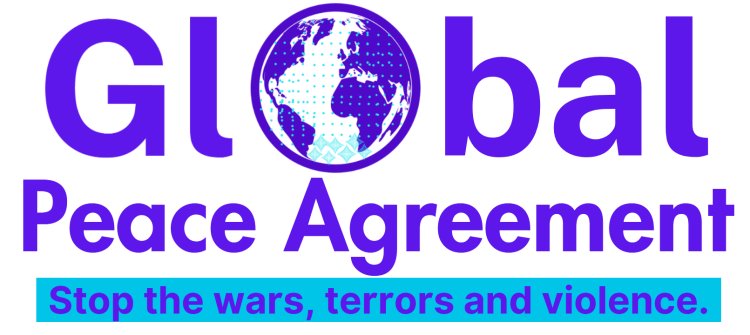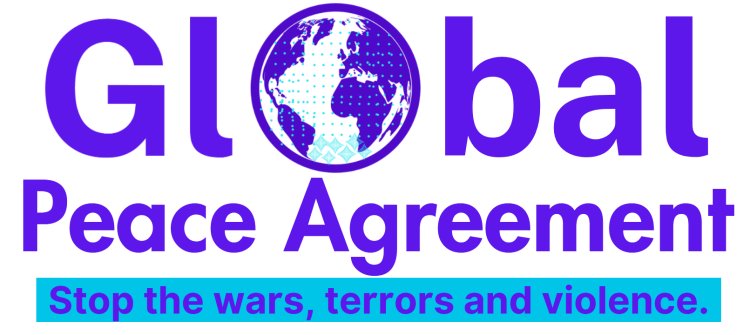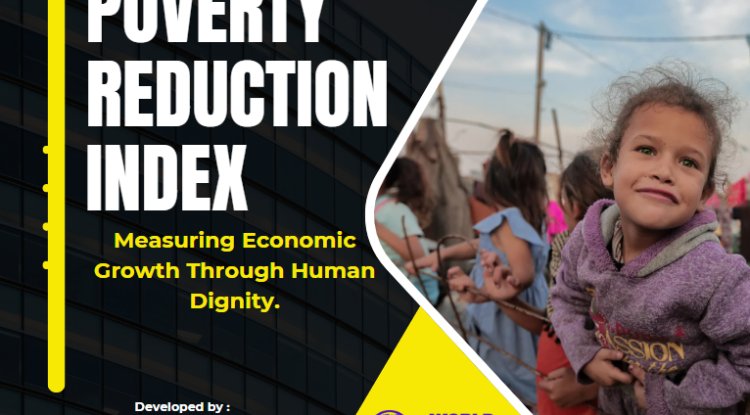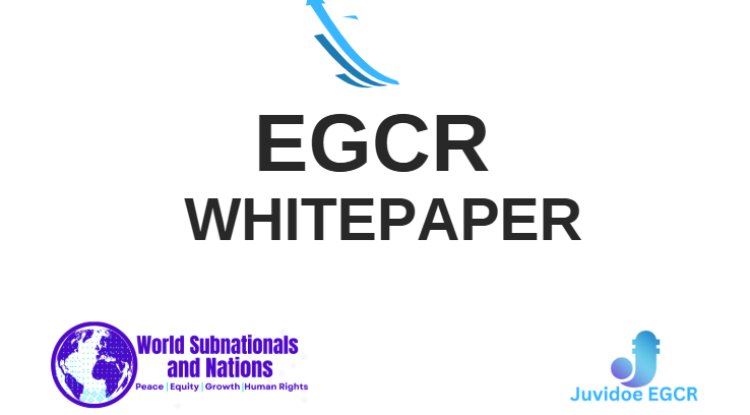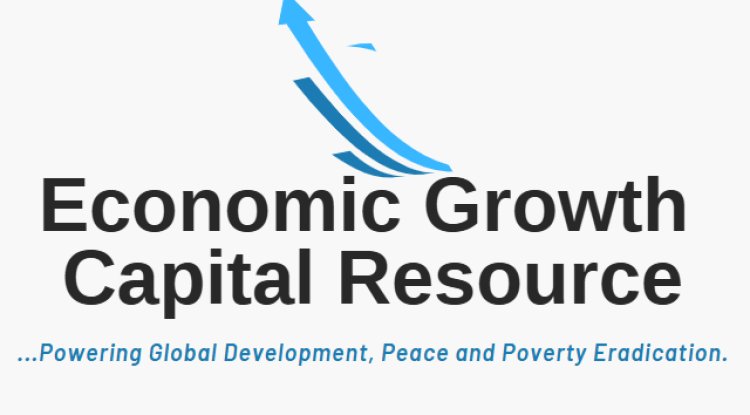Global Peace Agreement
Click here to sign the Global Peace Agreement.
Preamble
We, the signatories of the Global Peace Agreement, recognize the ever-pressing need to foster enduring peace and prosperity among states, regions, subregions, national and subnational territories across the globe, guided by the principles of cooperation, dialogue, and peaceful resolutions, and affirming our commitment to the development of win-win friendly relations,
Reaffirming the imperative of amicable and win-win conflict resolution without bloodshed and acknowledging that the use of military force, war, and violence has never led to a lasting solution to conflicts and has only left a trail of devastation and suffering,
Committed to eradicating insurgencies, terrorism, total war, invasion, biotech war, proxy war, civil war, limited war, religious war, trade/economic wars, technology wars, geopolitical wars, capital wars, and all military wars, we establish this Global Peace Agreement.
Article 1: Principles and Objectives
1.1. The Global Peace Agreement's principal goal is to promote peaceful cohabitation, cooperation, and problem resolution through communication and negotiation. This concept emphasizes signatory parties' commitment to finding nonviolent solutions to problems. It acknowledges that discourse, diplomacy, and negotiation are the most successful strategies for resolving disagreements and establishing sustainable peace. The Agreement promotes communication and understanding as the basis for resolving disputes and establishing peaceful relations among nations, regions, subregions, and subnational territories.
1.2. Signatories to this Agreement commit to renouncing the use of military force, war, and violence for resolving conflicts and disputes. This fundamental tenet underscores the absolute rejection of violence to resolve disputes. It reflects a shared belief in the devastating consequences of armed conflict and emphasizes the commitment to finding peaceful alternatives. By renouncing military force, the Agreement seeks to prevent and mitigate the suffering, destruction, and human cost associated with armed conflicts, reinforcing the principle that violence should never be a solution.
1.3. The Agreement emphasizes the principles of equality, justice, and respect for the sovereignty of all nations and subnational regions. This principle underscores the importance of fairness, equality, and justice in all international and domestic dealings. It reaffirms the respect for the sovereignty of all entities, whether they are nations, regions, subregions, or subnational territories. The Agreement promotes equitable treatment and ensures all parties are heard, considered, and respected in pursuing peaceful coexistence and cooperation.
1.4. The Agreement seeks to catalyze local and global economic growth, ensuring measurable development for all. This objective highlights the interconnectedness of peace and prosperity. It acknowledges that peace fosters a conducive environment for economic growth and development. The Accord's goal is to increase the well-being of individuals, communities, and nations all around the world by working toward the achievement of quantifiable progress. It does this by promoting investments in economic, social, and environmental improvement with the goal of elevating everyone's standard of living. This purpose indicates a dedication to improving human situations and ensuring that everyone benefits from economic growth.
Article 2: Conflict Resolution and Prevention
2.1. Signatories shall employ peaceful and diplomatic means to resolve conflicts, disputes, and disagreements. This principle underscores the commitment to peaceful resolution as the primary approach to addressing conflicts and differences. Diplomacy and negotiations shall serve as the cornerstone of conflict resolution, with parties engaged in open dialogue to achieve mutually agreeable solutions. The Accord emphasizes that disputes should be settled through constructive discussions and mediation rather than force.
2.2. All forms of insurgency, terrorism, total war, invasion, biotech war, proxy war, civil war, limited war, religious war, trade/economic wars, technology wars, geopolitical wars, capital wars, and any other military conflict shall be strictly outlawed and criminalized. This provision boldly states against violence and warfare that disrupts global peace. It underscores the absolute rejection of these destructive actions and their severe consequences. By criminalizing such activities, the Accord aims to deter potential perpetrators, hold them accountable for their actions, and prevent conflicts from escalating into large-scale hostilities.
2.3. The Agreement encourages a culture of proactive conflict prevention and early intervention to maintain global peace and stability. This principle highlights the importance of taking a proactive stance to prevent conflicts from emerging or escalating. It promotes efforts to identify and address underlying causes of conflicts and disagreements before they lead to violence. Early intervention strategies, such as mediation, dialogue, and crisis management, shall mitigate tensions and prevent conflicts from escalating, contributing to maintaining global peace and stability.
2.4. Signatories shall support education, awareness, and peacebuilding initiatives to foster a non-violence and conflict resolution culture. This additional principle emphasizes the significance of education and public awareness in promoting peace. Signatories commit to actively support and engage in initiatives that raise awareness of peaceful coexistence, conflict resolution skills, and the value of non-violence. These initiatives aim to cultivate a culture where differences are celebrated and resolved through dialogue and understanding rather than violence.
2.5. The Agreement calls for the establishment of an international body for conflict prevention and resolution, tasked with early warning, mediation, and peacekeeping efforts. This provision reinforces the commitment to address conflicts proactively. It outlines creating a specialized international body to monitor global situations, identify potential conflicts in their early stages, and intervene through mediation, crisis management, and peacekeeping efforts. This body will be a critical component in the global efforts to maintain peace and prevent conflicts from erupting.
.
Article 3: Dispute Settlement Mechanisms
3.1. Mediation
Signatories may seek mediation by neutral third parties to facilitate the peaceful resolution of disputes. The Agreement promotes dialogue, compromise, and understanding in mediation processes. Mediation offers a non-adversarial approach to conflict resolution, where skilled mediators assist parties in finding common ground and reaching mutually acceptable solutions. This mechanism encourages parties to work together toward reconciliation and restoring peaceful relations.
3.2. Arbitration
In cases where mediation does not lead to resolution, arbitration may be used to reach a binding decision. An impartial arbitration panel shall be constituted to ensure fairness and equity. Arbitration provides a structured process where parties present their arguments and evidence before a neutral body, which then renders a binding decision. This mechanism offers a level of formality and legal certainty that can be beneficial when disputes persist and require a definitive resolution.
3.3. Adjudication
For disputes that remain unresolved through mediation and arbitration, adjudication by an international court may be sought. Decisions rendered by the Court shall be binding and enforceable. Adjudication represents the highest level of formal dispute resolution, where an international court with the authority to interpret and apply international law presides over the case. Parties commit to abide by the Court's decisions, ensuring that disputes are definitively settled with binding and enforceable judgments.
3.4. Restorative Justice
In addition to the measures described above, the Agreement promotes the utilization of restorative justice approaches whenever they are appropriate. The goal of restorative justice is to put an emphasis on accountability, reconciliation, and the reintegration of impacted parties into the community. This is accomplished by repairing the damage that disputes have created. It offers a forum where victims and offenders can have meaningful conversations, which can then lead to resolutions that get at the heart of the issues that led to the conflict and help the injured party recover.
3.5. Truth and Reconciliation Commissions
The Agreement acknowledges the role of truth and reconciliation commissions in post-conflict situations. Such commissions aim to uncover and acknowledge the truth about past atrocities, facilitate reconciliation among affected parties, and establish a foundation for lasting peace. Parties commit to supporting and cooperating with truth and reconciliation processes in line with transparency, accountability, and justice principles.
Article 4: Peacekeeping and Humanitarian Interventions
4.1. The Agreement affirms the need for peacekeeping and humanitarian interventions to prevent and resolve conflicts. Such interventions shall only be undertaken with the consent of the parties involved and in accordance with international law. This provision recognizes the vital role of peacekeeping and humanitarian efforts in maintaining global peace and responding to crises. It emphasizes that these interventions should always respect the sovereignty and consent of affected parties while adhering to international legal frameworks, ensuring that they are carried out legitimately and justly.
4.2. Peacekeeping forces shall operate in accordance with the principles of impartiality, consent, and the use of force only in self-defense and defense of the mission's mandate. The Agreement establishes clear guidelines for peacekeeping operations, emphasizing the importance of impartiality and consent. Peacekeeping forces shall remain neutral and impartial in their interventions, ensuring they do not take sides in conflicts. They may only employ force in self-defence or to protect the mandate's objectives, further emphasizing the commitment to non-aggression and the responsible use of force in achieving peace.
4.3. Humanitarian Principles
The Agreement upholds the humanitarian principles of humanity, neutrality, impartiality, and independence in delivering assistance to affected populations. Humanitarian interventions shall prioritize the protection and well-being of civilians, irrespective of their affiliations or backgrounds. Humanitarian actors shall operate independently, without political or military influence, to ensure that assistance reaches those in need promptly.
4.4. The Responsibility to Protect
The Agreement acknowledges the principle of the Responsibility to Protect (R2P) and endorses its application in cases of mass atrocities, genocide, ethnic cleansing, and crimes against humanity. Signatories commit to preventing and halting such heinous acts through diplomatic, humanitarian, and, if necessary, military means, ensuring that the international community collectively upholds its responsibility to protect vulnerable populations.
4.5. Rehabilitation and Reconstruction
The Agreement underscores the significance of rehabilitation and reconstruction efforts in post-conflict scenarios to rebuild societies and promote stability. Parties commit to supporting and participating in initiatives to restore infrastructure, provide essential services, and foster the socio-economic development of conflict-affected regions.
Article 5: Security and Defense
5.1. Signatories shall commit to collective security and defense to ensure the protection of their territories and populations from external threats. The Agreement underscores the importance of collective security, emphasizing that nations, regions, subregions, and subnational territories should unite to deter external threats and safeguard their sovereignty. This commitment promotes a collaborative approach to addressing security concerns, focusing on mutual defence and support to maintain peace and stability.
5.2. The Agreement encourages arms reduction and the diversion of resources from the military to human development. In line with the pursuit of global peace, the Agreement promotes arms reduction efforts and the reallocation of resources toward human development. Signatories commit to gradually reducing their military capacities, aiming to redirect financial and material resources to address pressing social, economic, and humanitarian needs. This provision underscores the transformative potential of reallocating defense resources to advance the well-being and development of communities and nations.
5.3. Non-Proliferation
The Agreement reaffirms the commitment to nuclear disarmament and the prohibition of the proliferation of weapons of mass destruction. In addition, the Agreement calls for the elimination of all nuclear weapons. The nations that have placed their names to this agreement have made a commitment to play an active role in any international initiatives that are working towards the reduction and, eventually, the elimination of nuclear arsenals. This commitment has been made as part of the Nuclear Non-Proliferation Treaty (NPT), which was signed in July 2015. In addition to this, they have said that they intend to put an end to the proliferation of weapons of mass destruction in an effort to make the world a better and safer place to live. This is part of their larger goal to make the world a better and safer place to live.
5.4. Cybersecurity
Recognizing the growing importance of cybersecurity, the Agreement highlights the significance of collaborative efforts to enhance cybersecurity measures. Signatories commit to working together to prevent cyber threats, share knowledge, and promote international cooperation in securing digital spaces.
5.5. Environmental Security
The Agreement acknowledges that environmental challenges can pose security threats. Signatories commit to addressing environmental issues, such as climate change, resource scarcity, and natural disasters, to prevent security risks stemming from environmental degradation. The protection of the environment is seen as integral to ensuring long-term security.
5.6. Conflict Resolution Mechanisms
The Agreement establishes specific mechanisms for peaceful conflict resolution in security-related disputes among signatory parties. These mechanisms may include mediation, arbitration, or adjudication by an international body dedicated to resolving security issues. The commitment to peaceful dispute resolution reinforces the Agreement's overarching goal of promoting peace and cooperation in all aspects of security and defence.
Article 6: Economic and Environmental Cooperation
6.1. Economic cooperation and development shall be fostered among signatory states, regions, and subnational entities to ensure prosperity and well-being for all. The Agreement places significant emphasis on economic cooperation as a fundamental means to enhance the prosperity and well-being of all parties involved. The signatories to this document make a commitment to encouraging collaboration in a variety of economic sectors, including but not limited to trade, investment, technology transfer, and the development of infrastructure. They have come together in the hopes of promoting economic growth, the creation of new job opportunities, and an overall improvement in everyone's level of living.
6.2. Environmental conservation and sustainable development shall be promoted to address global challenges, including climate change. Recognizing the critical importance of environmental sustainability, the Agreement commits signatories to prioritize the conservation of natural resources and ecosystems. Parties pledge to support sustainable development methods that lessen the effects of climate change, save biodiversity, and encourage the responsible management of resources. This commitment is in line with the larger global effort that is being made to solve environmental concerns and protect the world for future generations.
6.3. Trade and Economic Agreements
The Agreement provides signatory nations with an incentive to negotiate and put into effect economic and trade agreements with one another. In order to foster an environment that is amenable to international commerce and investment, such agreements may place an emphasis on lowering trade barriers, harmonizing laws, and increasing economic integration. These agreements have as their primary goals the promotion of economic growth, the generation of new employment opportunities, and the strengthening of economic resiliency.
6.4. Infrastructure and Connectivity
Parties commit to cooperating on infrastructure development and connectivity projects that improve transportation, communication, and energy networks. They envision that by investing in essential infrastructure, they would be able to foster economic growth, improve accessibility, and expand connectivity on both a regional and global scale. These efforts enhance economic cooperation and trade by making it easier for people, goods, and services to move freely across locations.
6.5. Technology Transfer and Innovation
The Agreement emphasizes technology transfer and innovation to promote economic development and growth. Signatories pledge to collaborate in the exchange of technology, research, and innovation, fostering an environment where technological advancements can benefit all parties. This commitment underscores the importance of sharing knowledge and expertise to drive economic progress.
6.6. Environmental Agreements
In line with the goal of environmental conservation, the Agreement supports the negotiation and implementation of environmental agreements among signatory parties. These agreements may address specific environmental challenges, such as biodiversity conservation, pollution control, and climate change mitigation. Parties commit to working together to safeguard the environment and combat global environmental threats.
Article 7: Human Rights and Humanitarian Law
7.1. Signatories shall uphold fundamental human rights and humanitarian law, ensuring the protection of vulnerable populations during conflicts. The Agreement places a high focus on the protection of human rights and humanitarian ideals. Signatories pledge to protect and uphold the fundamental rights and dignity of all people, regardless of their origins, in times of peace and conflict. This commitment is made in the Universal Declaration of Human Rights. This commitment comprises safeguarding the well-being and safety of vulnerable persons such as refugees, internally displaced people, and other disadvantaged groups.
7.2. Human rights abuses, including genocide and crimes against humanity, shall not be tolerated and shall be subject to prosecution. The Agreement reaffirms the absolute rejection of human rights abuses, including the most heinous crimes, such as genocide and crimes against humanity. Parties pledge to hold perpetrators accountable for these offences through the appropriate legal channels. This commitment underscores the principle of justice and accountability for gross human rights violations.
7.3. Protection of Children
During times of armed conflict, children require a heightened level of special protection and care, which is emphasized by the Agreement. Those who sign the document make a commitment to uphold the international agreements and protocols that protect the rights and well-being of children living in places that are impacted by conflict. The prevention of child recruitment, sexual exploitation, and other forms of violence against children are given a significant amount of focus and attention.
7.4. Gender Equality and Women's Rights
In line with the promotion of human rights, the Agreement emphasizes gender equality and the protection of women's rights. Parties pledge to combat gender-based violence, discrimination, and inequality, ensuring that women and girls have equal access to opportunities and protection under the law.
7.5. Freedom of Expression and Media
The Agreement protects individuals' rights to freedom of expression and access to information, as well as the independence of the media. Signatories make a commitment to preserving the autonomy and pluralism of the media, facilitating free discourse, and defending the right to express opinions and ideas without the fear of repression or persecution.
7.6. Right to Education
In the pursuit of human rights, the Agreement highlights the importance of the right to education. Parties commit to ensuring access to quality education for all, including those affected by conflicts. This includes efforts to protect schools from attacks and to facilitate the continuation of education during crises.
Article 8: Non-Proliferation and Arms Control
8.1. Signatories commit to non-proliferation and disarmament efforts with the goal of achieving a world free from weapons of mass destruction. The Agreement places disarmament and non-proliferation at the forefront of global efforts to ensure lasting peace. The signatories to this agreement have made a solemn oath to make every effort to bring about the gradual and complete abolition of all forms of weapons of mass destruction, including nuclear, chemical, and biological weapons. This pledge aims to reduce the threat posed by these lethal weapons, contributing to the creation of an environment that is more secure and peaceful overall.
8.2. Arms control measures shall be adopted to minimize the risk of armed conflicts and reduce the global arms trade. In the pursuit of peace, the Agreement supports arms control initiatives designed to prevent and mitigate the risks of armed conflicts. Signatories commit to adopting measures that promote transparency in arms production and trade, thereby reducing the likelihood of conflicts driven by the proliferation of conventional weapons. This commitment aligns with the broader goal of reducing tensions and enhancing global security.
8.3. Demilitarization of Outer Space
Recognizing the importance of space as a shared domain, the Agreement encourages the demilitarization of outer space. Parties pledge to refrain from placing weapons in space and to promote international efforts to preserve space as a peaceful environment for the benefit of all. This commitment aims to prevent the weaponization of space, reducing the potential for conflicts beyond Earth's atmosphere.
8.4. Landmines and Cluster Munitions
The Agreement addresses the humanitarian impact of landmines and cluster munitions. Signatories commit to supporting international agreements that aim to eliminate these indiscriminate and deadly weapons. Parties also agree to cooperate in mine clearance and the provision of assistance to affected communities, contributing to post-conflict recovery and stability.
8.5. Export Controls
The Agreement promotes establishing and implementing effective export controls to prevent arms and technology from falling into the wrong hands. Signatories commit to controlling the export of military equipment and technology to non-state actors or entities that may use them for harmful purposes, reinforcing global security.
8.6. Small Arms and Light Weapons
The Agreement underscores the significance of addressing the proliferation of small arms and light weapons. Parties pledge to support international initiatives aimed at curbing the illicit trade in these weapons, which often play a destabilizing role in conflicts. The commitment also includes measures to enhance stockpile management and control to prevent the diversion of such arms.
Article 9: Implementation and Monitoring
9.1. The Agreement shall establish a mechanism for implementing and monitoring its provisions, ensuring compliance by all signatories. Recognizing the importance of effective implementation and monitoring, the Agreement establishes a comprehensive mechanism to ensure that all signatories abide by its provisions. This mechanism includes regular assessments, reporting, and the exchange of information among parties to track progress and adherence to the Agreement's principles and objectives.
9.2. A Secretariat shall coordinate and oversee the Agreement's implementation. The Agreement designates a dedicated Secretariat tasked with coordinating, overseeing, and facilitating the implementation of the Agreement's provisions. The Secretariat will serve as a central administrative body responsible for collecting, analyzing, and disseminating the Agreement's implementation information. It will also assist signatories in their efforts to meet their commitments.
9.3. Compliance Measures
The Agreement outlines compliance measures to address cases of non-compliance with its provisions. Signatories pledge to take appropriate actions to address non-compliance, including diplomatic measures, mediation, or arbitration, as outlined in Article 3. The Agreement ensures that parties are held accountable for fulfilling their commitments and upholding the principles of the Agreement.
9.4. Review and Reporting
The Agreement establishes a regular review and reporting process to ensure transparency and accountability. Signatories commit to periodic assessments of their progress in implementing the Agreement and submit reports on their actions. These reports will be reviewed and discussed within the framework of the Agreement, promoting open dialogue and shared responsibility.
9.5. Technical Assistance and Capacity Building
Recognizing that some signatories may require support to fulfil their obligations under the Agreement, it provides for technical assistance and capacity building. Parties commit to offering assistance to those in need, fostering cooperation and solidarity among signatories. This includes exchanging expertise, resources, and knowledge to strengthen all parties' capacity to implement the Agreement.
9.6. Public Awareness and Education
The Agreement promotes public awareness and education on its principles and objectives. Signatories pledge to engage in awareness-raising activities and educational initiatives to inform their populations about the Agreement's goals and the importance of peaceful coexistence. This commitment fosters a broader understanding and commitment to the principles of the Agreement.
Article 10: Amendments and Ratification
10.1. Any signatory may propose amendments to the Agreement and shall require a two-thirds majority vote for adoption. Recognizing the potential for evolving global circumstances and the need to adapt to new challenges, the Agreement includes a provision for amendments. Any signatory has the right to propose amendments to the Agreement. These proposed amendments undergo a thorough review process and become part of the Agreement if approved by a two-thirds majority vote. This mechanism ensures that the Agreement remains relevant and effective in addressing changing global dynamics.
10.2. The Agreement shall be enacted upon ratification by two-thirds of the signatory states, regions, and subnational entities. The Agreement establishes clear criteria for its entry into force. It requires the formal ratification of the Agreement by two-thirds of the signatory states, regions, and subnational entities. This provision underscores the importance of broad support and commitment to the principles and objectives of the Agreement before it becomes legally binding.
10.3. Subsequent Ratifications
Additional states, regions, and subnational entities may join the Agreement through a formal ratification process. The Agreement remains open for accession by new parties that express their commitment to its principles and objectives. These subsequent ratifications contribute to the universality and effectiveness of the Agreement.
10.4. Review of Amendments
In the event of amendments to the Agreement, signatories and parties commit to a review process to consider their acceptance and implementation. This ensures that proposed amendments are thoroughly examined and, if accepted, integrated into the Agreement. The review process allows all parties to engage in open dialogue and contribute to the ongoing development of the Agreement.
10.5. Notification and Publication
The Agreement outlines the procedures for notification and publication of amendments and ratifications. These processes are conducted in a transparent and accessible manner, ensuring that all signatories are informed of changes to the Agreement and the status of ratifications. This transparency promotes accountability and engagement among signatories and parties.
In witness whereof, the undersigned, having been duly authorized, have affixed their signatures to this Global Peace Accord in the pursuit of lasting peace, cooperation, and global prosperity.
Membership of World Subnationals and Nations is an automatic acceptance of this Peace Agreement
All members/indegines/citizens/residents and the representatives of the subnational and national entities/territories, in full agreement with the principles and purposes of the WSandN Charter, hereby automatically adopt this Global Peace Agreement and declare it legitimate and binding.
NOTE: Membership of the WSandN is an automatic acceptance of this Agreement . However, signatures of representatives may be made available on hardcopies of this agreement
Initially done in the city of Sydney Australia, on this of 30th, November 2023
